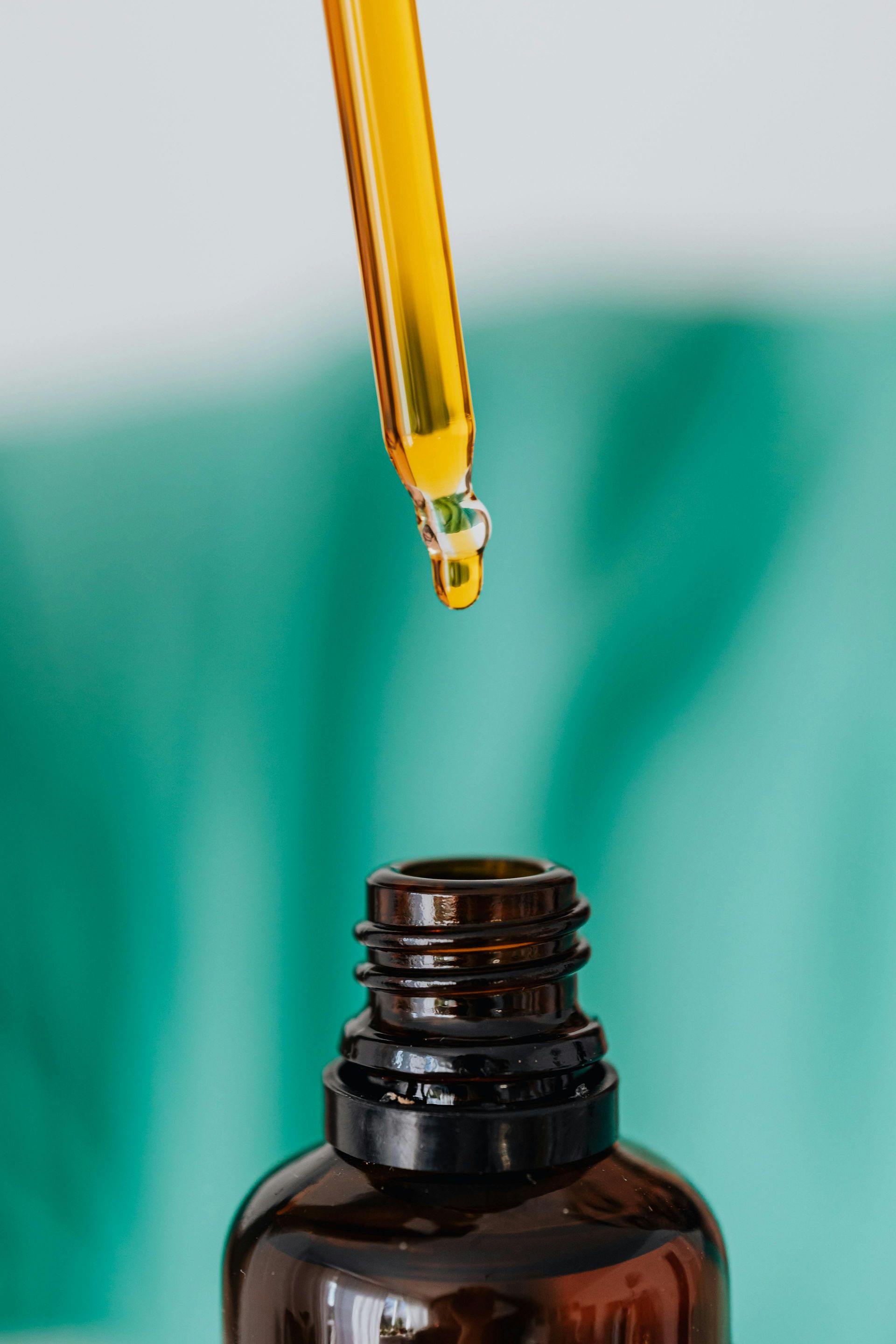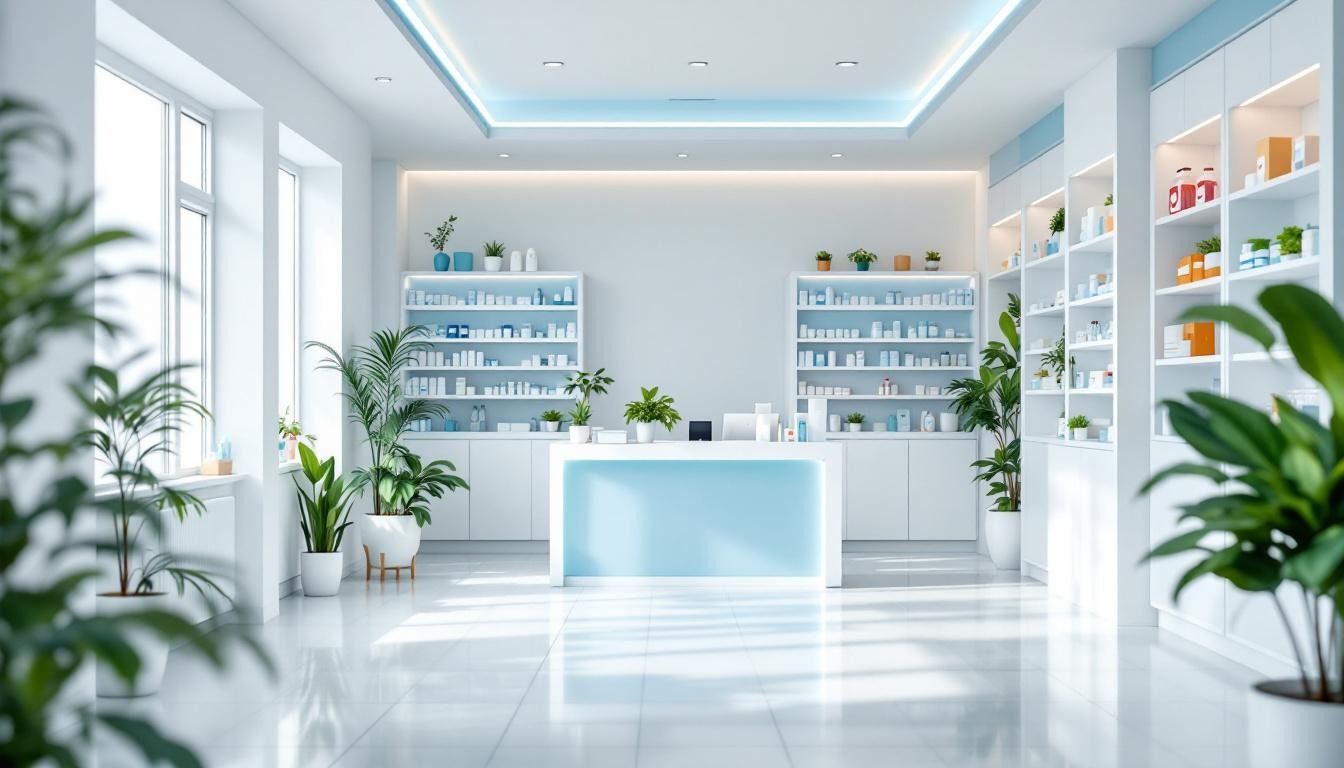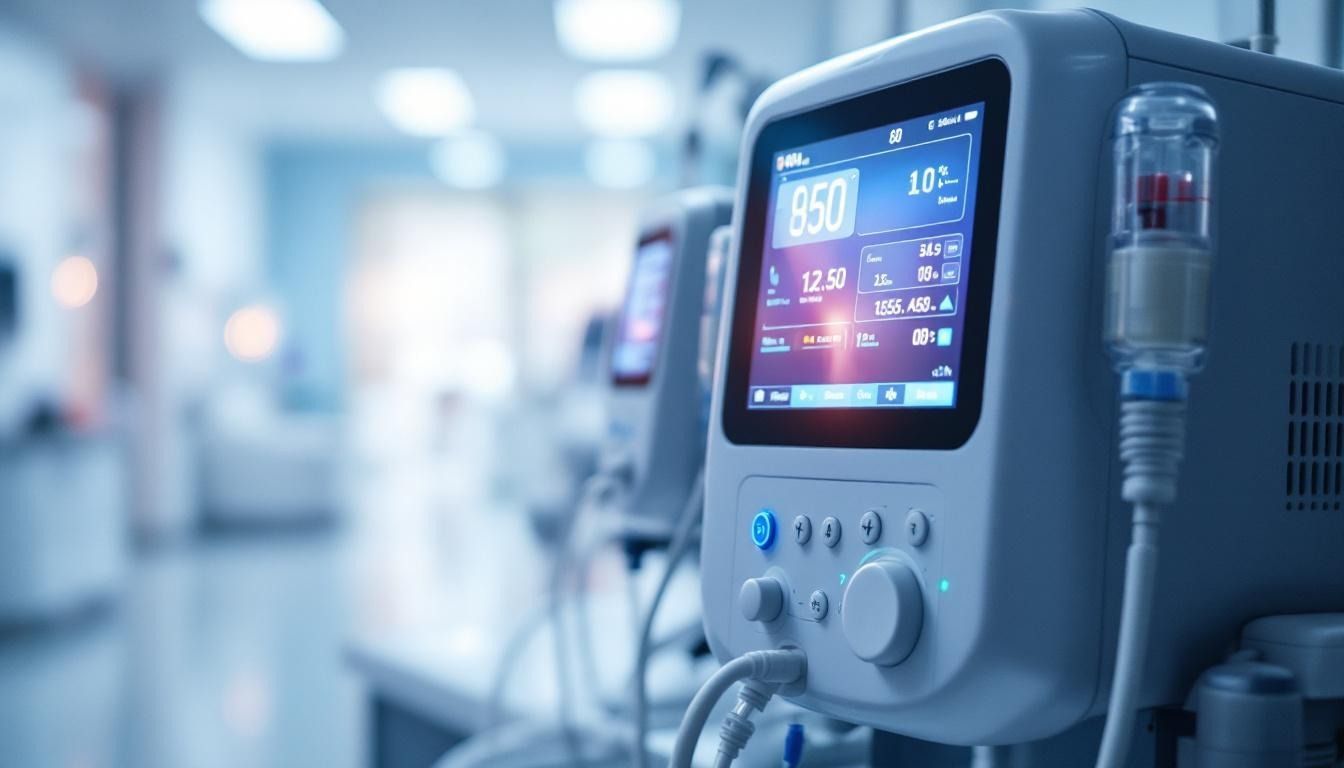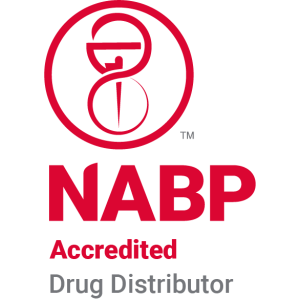How does custom compounding minimize health risks?

Understanding the Role of Custom Compounding in Patient Safety
Custom compounding plays a crucial role in modern healthcare by offering personalized medication solutions tailored to individual patient needs. While these specialized preparations can significantly reduce health risks and improve treatment outcomes, they also come with inherent safety considerations that require strict adherence to standards and regulations. This article explores how custom compounding minimizes health risks, the safety benefits it provides, and the mechanisms and standards that ensure safe practice.
The Intersection of Personalized Medicine and Custom Compounding
How compounded medications are tailored to meet individual patient needs.
Compounded drugs are carefully customized to address specific patient requirements that cannot be met by standard, commercially available medications. Pharmacists modify formulations by adjusting dosages, altering routes of administration, or removing allergens from ingredients. For example, a patient who cannot swallow pills may receive a liquid form of their medication, while someone with a known allergy to a certain filler can receive a formulation without that substance.
This level of personalization ensures that the medication closely aligns with the patient’s unique medical profile, promoting better adherence and outcomes.
The advantages of personalized formulations in reducing adverse effects.
Custom compounding offers notable safety benefits by reducing the risk of side effects linked to unsuitable formulations. For instance, eliminating allergens like dyes or preservatives from medications minimizes allergic reactions. Adjusting doses allows for precise control over medication strength, reducing the likelihood of overdose or underdose, which can cause serious health issues.
Furthermore, tailored formulations can lessen gastrointestinal irritation or other adverse effects by choosing suitable administration routes or removing irritating ingredients. Although compounded drugs are not FDA-approved and carry higher risks, practicing proper techniques and strict standards can enhance safety.
Examples of precision medication adjustments such as dosage and allergen removal.
- Dosage customization: Adjusting medication strength to match the patient’s specific needs, especially useful in pediatric or geriatric populations.
- Allergen removal: Preparing formulations free from common allergens like gluten, dyes, or preservatives to prevent allergic reactions.
- Formulation changes: Creating topical creams, liquids, or lollipops when oral pills are unsuitable.
- Route-specific formulations: Designing medications for subcutaneous or transdermal administration based on patient needs.
How does personalized medication formulation improve patient safety and health outcomes?
Personalized medication formulation enhances safety and health outcomes by aligning treatment precisely with the individual patient's genetic, biochemical, and environmental profile. This tailored approach minimizes adverse reactions, reduces trial-and-error in finding effective therapies, and can improve the efficacy of treatments. Using advanced diagnostics and pharmacogenomics allows healthcare providers to make informed adjustments, leading to better health results and fewer hospitalizations.
Safety Standards and Regulatory Oversight in Compounding
What safety considerations and standards are involved in compounded medications?
Compounded medications are tailored products created in pharmacies to meet specific patient needs when commercially available drugs are insufficient. However, because they are not FDA-approved, various safety considerations are essential to reduce health risks.
Safety compliance involves rigorous aseptic techniques and strict environmental controls to prevent contamination. Certified staff trained in proper compounding practices are vital, especially for sterile formulations. Regulatory oversight varies: state pharmacy boards oversee non-FDA-registered pharmacies, ensuring they follow standards for licensing, training, and facility safety. For facilities producing sterile compounds, adherence to USP <797> standards is critical to maintaining cleanliness and sterility.
The FDA regulates outsourcing facilities—specialized compounding sites that produce medications under strict Current Good Manufacturing Practice (CGMP) standards. These facilities are subject to regular inspections and quality audits, which help prevent issues like contamination, incorrect ingredient levels, or microbial growth.
The United States Pharmacopeia (USP) provides foundational guidelines for ensuring ingredient quality and proper compounding procedures. Standards such as USP <795> for non-sterile and USP <797> for sterile preparations specify requirements for cleanliness, equipment, documentation, and staff training. USP <800> extends these standards to hazardous drugs to protect healthcare workers and patients from exposure.
Maintaining a controlled environment is crucial. This includes working in ISO Class 5 sterile areas, using validated sterilization methods, and following detailed protocols. Additionally, third-party testing for potency, purity, and microbial contamination is recommended and often required for compounded products.
Accreditation from recognized organizations, such as the Pharmacy Compounding Accreditation Board (PCAB), offers an extra layer of safety assurance. These accreditations confirm that a pharmacy meets high-quality standards through rigorous evaluations and ongoing quality improvement.
In summary, compounded medications must adhere to comprehensive safety standards involving environmental controls, staff training, quality testing, and regulatory oversight. This combined approach aims to safeguard public health while allowing the customization that benefits patients with specific needs.
How Custom Compounding Reduces Health Risks

How does custom compounding reduce health risks?
Custom compounding allows healthcare providers to prepare medications tailored specifically to individual patient needs. For example, it can provide precise doses that prevent over- or under-dosing, or create formulations that exclude allergens or unnecessary ingredients, reducing the chance of adverse reactions.
By customizing medication forms—such as turning pills into liquids for those who have difficulty swallowing—compounded drugs can also minimize dosing errors and improve treatment adherence.
However, it's important to recognize that compounded drugs are not FDA-approved. They are prepared without the same rigorous safety, efficacy, and quality testing as commercial pharmaceuticals. Poor compounding practices can introduce serious health risks, including contamination, incorrect active ingredient levels, or toxicity.
Contamination incidents, such as the 2012 fungal meningitis outbreak, highlight the dangers of substandard compounding. Errors in formulation and inadequate sanitation yearn for strict regulation.
Regulations like those from USP set standards to improve safety, emphasizing proper procedures, trained personnel, and quality checks. Some facilities, especially outsourcing ones, are supervised by the FDA and must comply with Good Manufacturing Practice (GMP). Pharmacy-based compounding, however, varies widely in oversight.
While compounded medications offer significant advantages when FDA-approved drugs are unavailable or unsuitable, ensuring safety depends heavily on the pharmacy’s adherence to strict standards and regulations. Patients should always verify if their pharmacy maintains proper licensing, accreditation, and quality assurance practices.
Overall, while personalized compounding significantly reduces specific health risks by addressing individual needs, it must be approached with caution and under reputable, well-regulated practices to truly ensure safety.
The Impact of Sterile Compounding on Patient Safety

How does sterile compounding impact patient safety?
Sterile compounding plays a crucial role in safeguarding patient health by creating medications that are free from microbial contamination. This is especially vital for patients with weakened immune systems or those undergoing treatments that require injectable or infusion therapies.
By following strict standards outlined in USP <797> and <800>, pharmacies and healthcare facilities can effectively prevent contamination and ensure the sterility of compounded drugs. These standards mandate comprehensive environmental controls, including the use of HEPA-filtered laminar airflow hoods and biological safety cabinets, to maintain a contaminant-free environment.
Staff training is a fundamental component of sterile compounding. Proper education ensures that personnel are proficient in aseptic techniques, appropriate use of personal protective equipment (PPE), and environmental monitoring procedures. This meticulous approach minimizes the risk of microbial contamination during drug preparation.
In addition to physical controls, rigorous quality testing and documentation further enhance safety. Third-party laboratory testing confirms the absence of microbial agents and endotoxins in sterile preparations. Such measures are critical for vulnerable populations, including those receiving chemotherapy, organ transplants, or other immunosuppressive treatments.
Overall, adherence to these standards ensures the creation of safe, effective sterile medications, reducing the likelihood of infections and adverse reactions. Consequently, sterile compounding significantly improves treatment outcomes and patient safety across healthcare settings.
Benefits of Custom Compounding in Minimizing Side Effects and Allergies

What are the benefits of compounding in minimizing side effects and allergies?
Compounded medications offer significant advantages for patients with allergies or intolerances to certain ingredients found in standard, mass-produced drugs. By customizing formulations, pharmacists can exclude common allergens such as dyes, preservatives, gluten, or lactose, which can cause adverse reactions in sensitive individuals.
This personalized approach not only reduces the risk of allergic responses but also allows for precise dosage adjustments. Patients who require doses that are smaller or larger than standard strengths, or those needing specific ratios of active ingredients, benefit greatly from tailored formulations.
In addition, compounded medications can be prepared in alternative forms like liquids or topical applications. These formats are especially useful for children who may have difficulty swallowing pills or for patients who need localized treatment to minimize systemic side effects.
Overall, compounding enhances medication safety by aligning treatment more closely with individual health needs and sensitivities, thereby improving adherence and reducing the chances of side effects or allergic reactions.
The Role of Quality Control and Good Manufacturing Practices (GMP)

What safety considerations and standards are involved in compounded medications?
Ensuring the safety of compounded medications involves a range of rigorous standards and practices. Pharmacies engaged in compounding must adhere to strict aseptic techniques, especially during sterile preparations, to prevent microbial contamination. Environmental controls are crucial; for instance, sterile compounds are prepared in ISO Class 5 cleanroom environments with HEPA-filtered airflow to minimize airborne particles.
Staff training is also vital. Compounding personnel must be well-versed in proper procedures, including the use of personal protective equipment (PPE), to avoid cross-contamination and ensure the precision of each formulation. Compliance with United States Pharmacopeia (USP) standards—specifically USP <795> for non-sterile preparations, USP <797> for sterile preparations, and USP <800> for handling hazardous drugs—is essential.
In addition to USP standards, Good Manufacturing Practices (GMP) guidelines, particularly for outsourcing facilities registered with the FDA, set the framework for manufacturing consistency and quality. These practices include validating processes, using only approved and tested ingredients, and maintaining comprehensive documentation of procedures and quality checks.
Third-party testing and accreditation further bolster safety. Accreditation programs such as the Pharmacy Compounding Accreditation Board (PCAB) certify pharmacies that meet strict quality standards. Third-party labs routinely test raw ingredients and finished products for purity, potency, and absence of microbial contamination.
Facility design and environmental controls are meticulously monitored and validated. For example, ISO Class 5 environments feature controlled airflow and filtration systems to prevent contamination. Thorough record-keeping and process validation ensure that every step complies with safety and quality protocols, reducing risks of errors, contamination, and unsafe ingredients.
Overall, a combination of stringent standards, trained personnel, validated processes, and third-party verification is essential for safeguarding patients and ensuring that compounded medications are safe and effective.
Balancing Innovation and Safety in Custom Medications
While custom compounding offers remarkable benefits in personalized care and risk reduction, it necessitates meticulous adherence to safety standards and regulations. Proper oversight, rigorous quality control, and informed patient choices are essential for maximizing safety and health outcomes. When combined with advances like sterile compounding and credentialed practices, compounding remains a vital component of safe, tailored healthcare.
References
- Compounding and the FDA: Questions and Answers
- Thinking of using a compounding pharmacy? What you ...
- The Role of Compounding Pharmacies in Safe, Effective ...
- Safety of Compounded Medications - PMC
- Compounded Medications: Definition, Uses, Risks, and More
- So, what is custom compounding anyway?
- Mitigating Risks of Compounded Drugs Through Surveillance
- Pros and Cons of Pharmacy Compounding
- Preventing Risks Involved with Compounding Medication
- Compounding Pharmacies: The Real Story













